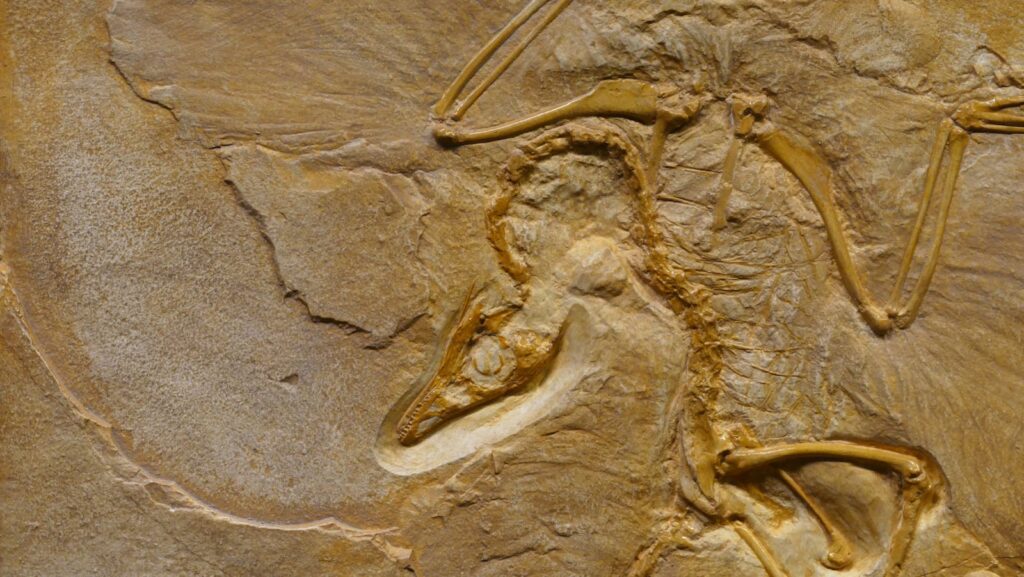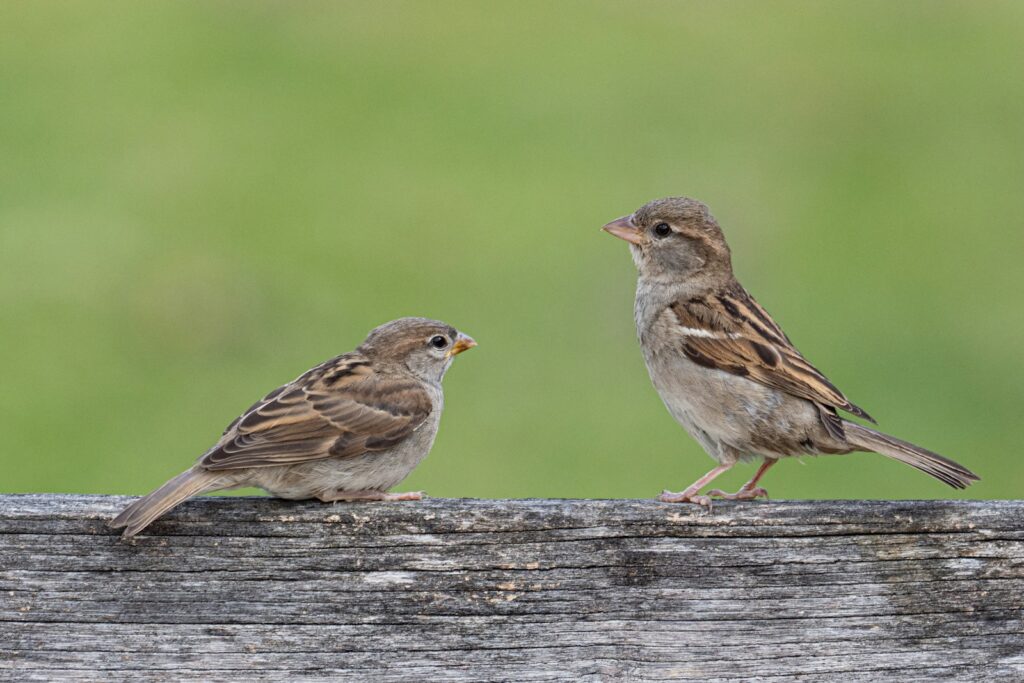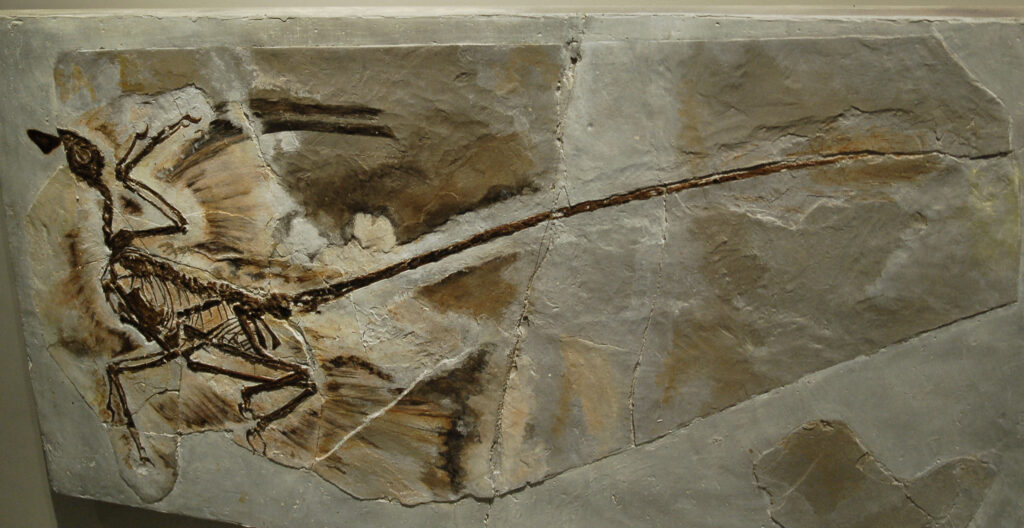When we look at a mallard paddling across a pond or watch a wood duck perched on a branch, it’s difficult to imagine that these feathered creatures share a direct lineage with the fearsome dinosaurs that once ruled our planet. Yet, the evolutionary connection between dinosaurs and modern birds represents one of the most fascinating stories in natural history. Birds aren’t just inspired by dinosaurs or distant relatives—they are, in fact, living dinosaurs, the last surviving members of a lineage that dates back over 230 million years. This remarkable evolutionary journey from towering prehistoric predators to the ducks that waddle in our parks reveals nature’s extraordinary adaptability and the mechanisms of evolution at work across deep time.
The Dinosaur-Bird Connection: Breaking Down the Evidence

The theory that birds evolved from dinosaurs isn’t new—it dates back to the 1860s when biologist Thomas Henry Huxley first noted similarities between the fossilized remains of small dinosaurs and modern birds. However, the scientific consensus has grown substantially stronger in recent decades. Fossil discoveries, particularly from the rich deposits in China’s Liaoning Province, have revealed numerous feathered dinosaurs with bird-like characteristics. These transitional fossils show a clear progression of anatomical features from dinosaurs to birds. Perhaps most compelling is the evidence from skeletal structures: the three-fingered hands of theropod dinosaurs correspond directly to the wing bones of modern birds, and the distinctive wishbone (furcula) was present in dinosaurs long before the first birds took flight. Microscopic analysis of fossilized tissues has even revealed similarities in bone structure and growth patterns between dinosaurs and their avian descendants.
Theropods: The Dinosaur Ancestors of Modern Birds

Not all dinosaurs were direct ancestors to birds—this honor belongs specifically to the theropods, a diverse group of predominantly carnivorous dinosaurs characterized by hollow bones and three-toed limbs. This group includes famous predators like Tyrannosaurus rex and Velociraptor, but it was smaller, more agile members of this clade that evolved into birds. Theropods exhibited numerous bird-like characteristics, including wishbones, wrist bones that could fold against the body (similar to a bird’s wing), forward-facing eyes, and air-filled bones that reduced weight. Perhaps most significantly, many theropods possessed feathers, which initially evolved not for flight but for insulation and display. The maniraptoran subgroup of theropods demonstrates particularly close relationships to birds, with some species like Microraptor even showing evidence of limited gliding abilities. The evolutionary path from ground-dwelling theropod to airborne bird proceeded through incremental adaptations rather than sudden transformations.
Archaeopteryx: The Iconic Transitional Fossil

Discovered in southern Germany in 1861, Archaeopteryx remains one of paleontology’s most significant finds—a perfect example of a transitional fossil linking dinosaurs and birds. Dating back approximately 150 million years to the Late Jurassic period, this crow-sized creature exhibited a fascinating mix of dinosaurian and avian features. Like its dinosaur ancestors, Archaeopteryx possessed a long bony tail, teeth, and three clawed fingers on each wing. Yet it also had well-developed flight feathers and a brain case similar to modern birds. While not a direct ancestor to modern birds, Archaeopteryx represents a crucial evolutionary stage, demonstrating how flight-capable creatures evolved from terrestrial dinosaurs. Despite possessing wings and feathers, Archaeopteryx was likely not a strong flier by modern standards, perhaps capable of only short gliding flights or assisted running similar to how some modern ground birds use their wings to help them sprint uphill.
The Evolution of Feathers: More Than Just Flight

One of the most significant misconceptions about dinosaur-to-bird evolution involves feathers, which did not initially evolve for flight. The earliest feather-like structures first appeared in dinosaurs as simple filaments similar to the fuzz on modern baby birds or downy feathers. These primitive “proto-feathers” served primarily as insulation, helping dinosaurs regulate their body temperature. Over millions of years, these structures evolved greater complexity, developing the central shaft and barbed structure that characterizes modern feathers. Evidence suggests that display was another important function of dinosaur feathers, with some species having brightly colored plumage used for courtship displays or territorial signals, much like modern birds. Flight feathers came later in evolution, with asymmetrical vanes that provided the aerodynamic properties necessary for generating lift. Remarkably, many non-flying dinosaurs had elaborate feather arrangements on their tails, arms, and legs, showing that feathers had important functions long before any dinosaur took to the air.
The Avian Respiratory System: A Dinosaurian Inheritance

One of the most distinctive features linking birds to their dinosaur ancestors is their unique respiratory system. Unlike mammals, which use a bidirectional breathing system where air flows in and out through the same path, birds possess a unidirectional airflow system with air sacs in addition to lungs. This highly efficient system enables birds to extract oxygen even during exhalation, providing the high-energy demands of flight. Remarkably, studies of dinosaur fossils have revealed evidence of similar respiratory structures, particularly in theropods. Hollow spaces in their vertebrae and bones, called pneumatic foramina, indicate the presence of air sacs similar to those in modern birds. Computer tomography scans of dinosaur fossils show that these air sacs extended throughout much of their bodies, just as in birds today. This respiratory adaptation likely evolved first as an efficient cooling system for active predators and was later co-opted for the high metabolic demands of flight in avian dinosaurs.
From Ground to Sky: Theories on the Evolution of Flight

How dinosaurs first took to the air remains one of paleontology’s most debated topics, with two primary competing theories. The “trees-down” hypothesis suggests that flight evolved in tree-dwelling dinosaurs that initially glided between branches before developing powered flight. Proponents point to fossils like Microraptor, which had feathers on all four limbs and may have been a proficient glider. The alternative “ground-up” theory proposes that flight evolved in ground-dwelling dinosaurs that used their feathered forelimbs to help catch prey or for display, eventually leading to flight capabilities. This scenario is supported by the running and leaping abilities of many small theropods, whose wing-like forelimbs may have provided additional lift during pursuits. Most paleontologists now believe elements of both theories likely played a role in the evolution of flight, with different lineages potentially following different paths toward becoming airborne. Recent computer modeling of dinosaur movement and anatomy has shown that some feathered dinosaurs could have used wing-assisted incline running—a behavior seen in some modern birds—as an intermediate step toward true flight.
The Cretaceous-Paleogene Extinction: How Birds Survived

Approximately 66 million years ago, the catastrophic impact of an asteroid ended the reign of non-avian dinosaurs in what is known as the Cretaceous-Paleogene (K-Pg) extinction event. This global catastrophe eliminated roughly 75% of all species on Earth, including all dinosaurs except for a small group of avian dinosaurs that would eventually give rise to modern birds. How did these bird ancestors survive when their dinosaur relatives perished? Several factors likely contributed to their survival. Their small size may have allowed them to shelter more effectively and require less food during the immediate aftermath of the impact. Their ability to fly potentially enabled them to escape localized destruction and find new food sources. Seed-eating capabilities probably helped bird ancestors survive when plant life was devastated, as seeds represent a storable food source that could last through the extinction event’s darkest period. The birds that survived were likely ground-dwelling, as fossil evidence suggests that many tree-dwelling bird lineages perished when forests collapsed worldwide.
The Rise of Modern Birds: The Neornithes Takeover

After the K-Pg extinction event, the surviving bird lineages—belonging to a group called Neornithes or “new birds”—underwent a remarkable adaptive radiation, evolving into thousands of new species to fill ecological niches left vacant by extinct dinosaurs and other animals. This diversification happened with surprising speed in evolutionary terms, with most major bird groups established within 15 million years after the extinction event. Genetic studies suggest that several modern bird orders, including ancestors of ducks, chickens, and ratites (ostrich-like birds), had already evolved before the extinction event but remained relatively minor components of dinosaur-dominated ecosystems. After the extinction, these surviving lineages expanded dramatically into newly available habitats. The duck lineage (Anseriformes) and chicken-like birds (Galliformes) represent the earliest branches of modern bird evolution, making ducks among the most ancient bird groups still living today. This rapid diversification created specialized bills, feet, wings, and behaviors adapted to specific ecological roles—from fish-catching herons to seed-cracking finches.
Inside the Avian Brain: Dinosaur Intelligence Preserved

The intellectual capabilities of birds represent another fascinating link to their dinosaur ancestors. Birds possess remarkably complex brains for their body size, with neural organization that allows for sophisticated behaviors, problem-solving, tool use, and in some species, impressive linguistic abilities. Studies of dinosaur endocasts—natural molds of brain cavities—reveal that many theropod dinosaurs had expanded brain regions associated with complex sensory processing, particularly vision and coordination. The enlarged cerebrum and cerebellum in bird-like dinosaurs suggest cognitive abilities potentially similar to those of modern birds. The evolution of flight likely drove further brain expansion, as aerial navigation requires sophisticated spatial awareness and rapid processing of visual information. Remarkably, the neurological pattern seen in birds differs fundamentally from mammals, representing a separate evolutionary path to intelligence. The avian brain achieves computational power through densely packed neurons rather than the folded cortex seen in mammals, showing how dinosaurian brains evolved their unique solution to cognitive challenges.
Ducks in Focus: The Anseriformes Success Story

Ducks, along with geese and swans, belong to the order Anseriformes, one of the most ancient lineages of modern birds with fossils dating back to the Late Cretaceous period, over 66 million years ago. This makes them direct witnesses to the extinction event that claimed their non-avian dinosaur relatives. The duck lineage demonstrates remarkable evolutionary adaptations inherited and modified from their dinosaur ancestors. Their specialized bill with its filtering lamellae allows them to strain food from water, representing a specialized feeding adaptation not unlike the varied dental adaptations seen in different dinosaur groups. The waterproofing of duck feathers through specialized preen gland oils represents an elaboration of feather maintenance behaviors likely present in their dinosaur ancestors. Perhaps most remarkably, the webbed feet that make ducks such efficient swimmers evolved from the same basic foot structure that once supported bipedal dinosaurs walking across Mesozoic landscapes. Modern genetic studies have confirmed the ancient origins of ducks, placing them as one of the earliest branches in the bird evolutionary tree.
Living Dinosaurs: Why Birds Are Modern Dinosaurs, Not Just Descendants

From a scientific classification perspective, birds aren’t merely descended from dinosaurs—they are dinosaurs. This distinction is important for understanding evolutionary relationships. In cladistic taxonomy, which groups organisms based on their most recent common ancestor, birds nest firmly within the dinosaur family tree as a specialized group of theropod dinosaurs that happened to survive the K-Pg extinction event. To put this in perspective, the relationship between birds and other dinosaurs is closer than the relationship between humans and other primates like lemurs. Just as humans remain primates despite our unique characteristics, birds remain dinosaurs despite their feathers and flight. The dinosaurian nature of birds is evident not just in their skeletal structure but in their behavior—territorial displays, nest-building, parental care, and even the way they move their heads in a jerky, bird-like fashion all have roots in dinosaur behavior. When we observe a duck’s distinctive walk, we’re witnessing movement patterns inherited from dinosaur ancestors.
Convergent Evolution: How Duck Features Evolved Independently

While ducks inherited many features directly from their dinosaur ancestors, some of their most distinctive characteristics evolved independently through convergent evolution. The broad, flat bill that characterizes most duck species evolved separately from similar structures in other animals like the platypus, representing independent adaptations to similar feeding strategies. The evolution of webbed feet in ducks represents another example of convergent evolution, as similar adaptations appeared independently in other aquatic animals from different lineages. Even within birds, diving adaptations have evolved separately in different groups—the foot-propelled diving of grebes evolved independently from the wing-propelled diving seen in auks and penguins. These instances of convergent evolution highlight how similar environmental pressures can produce similar anatomical solutions in unrelated lineages. The success of ducks across diverse habitats worldwide—from Arctic tundra to tropical wetlands—demonstrates both the adaptability inherited from their dinosaur ancestors and the novel adaptations that evolved as they expanded into specialized aquatic niches their terrestrial ancestors never inhabited.
Dinosaur Behaviors Preserved in Modern Birds

Many behaviors exhibited by modern birds, including ducks, have direct links to behaviors first developed by their dinosaur ancestors. Nest-building and egg-laying strategies show remarkable continuity—many dinosaurs built ground nests and arranged their eggs in patterns similar to those of ground-nesting birds today. Brooding behavior, where adults sit on eggs to incubate them, is well-documented in fossils of oviraptor dinosaurs found in positions identical to nesting birds. Parental care, including feeding and protecting young, appears to have been common among many dinosaur species based on fossil evidence of adults found alongside juveniles. Even the distinctive head-bobbing motion birds use when walking originated with their dinosaur ancestors, who used this movement to stabilize their vision while moving—a behavior preserved across millions of years of evolution. Courtship displays in modern birds, which often involve elaborate movements and feather presentations, likely evolved from similar display behaviors in feathered dinosaurs, particularly those with colorful feather crests and elaborate tail feathers that served no obvious practical purpose beyond visual display.
The Future Evolution of Birds: Dinosaurs Still Evolving

As the last living dinosaurs, birds continue to evolve today, adapting to changing environments and human influences. While evolution generally occurs too slowly for humans to observe directly, we can witness adaptations happening in bird populations responding to urban environments, climate change, and other modern pressures. Some duck species have shown remarkable adaptations to city life, with urban mallards exhibiting different behaviors and even physical characteristics compared to their rural counterparts. Anthropogenic forces, including habitat alteration, pollution, and climate change, are creating new selective pressures that will shape the future evolution of birds. The rapid adaptability that helped bird ancestors survive the K-Pg extinction event continues to serve them well in navigating human-dominated landscapes. Genetic studies suggest birds may be evolving at a faster rate than previously thought, with some research indicating accelerated rates of genetic change in response to environmental stressors. The evolutionary journey that began with dinosaurs over 230 million years ago continues today, with birds representing not the end of dinosaur evolution but its ongoing story—a living testament to the resilience and adaptability of the dinosaur lineage.
Tracing the Dinosaur Roots of Modern Ducks

The evolutionary connection between dinosaurs and ducks represents one of nature’s most extraordinary stories of adaptation and survival. From the fearsome theropods of the Mesozoic to the mallards swimming in our local ponds, this unbroken lineage spans more than 230 million years of Earth’s history. While dinosaurs are often spoken of in the past tense, the truth is that they never truly went extinct—they live on in the approximately 10,000 species of birds that inhabit our planet today. Each time we observe a duck taking flight, caring for its young, or waddling across a park, we’re witnessing behaviors with roots deep in the dinosaurian past. This evolutionary connection reminds us that nature’s story is one of continuity rather than discrete chapters, with each living species representing not an endpoint but a moment in an ongoing evolutionary journey that stretches back to the dawn of life itself.




